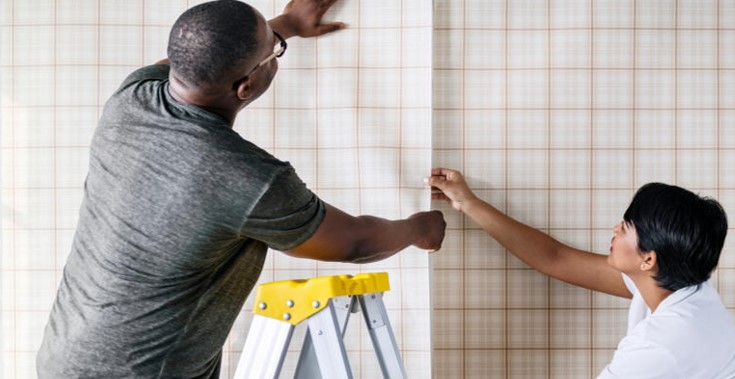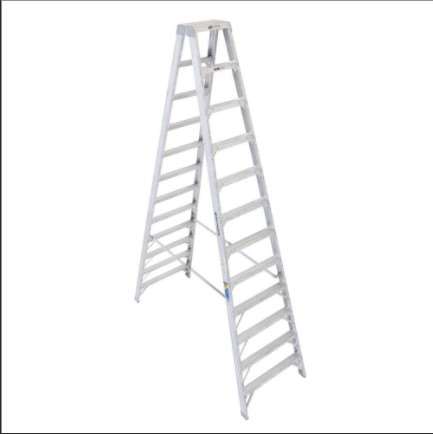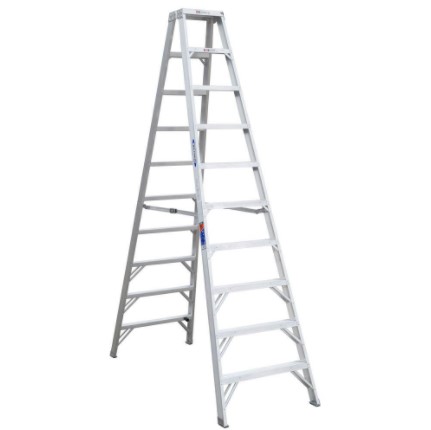 S2K Commerce - Products Dropdown
S2K Commerce - Products Dropdown
 Web Content Viewer
Web Content Viewer

Ladder Safety: 4 Tips to Avoid Injury
Ladders are essential tools for home improvements and maintenance. Their use can lead to injury though if utilized incorrectly or carelessly. Before climbing a ladder, be sure you know how to properly use one so that you complete the job successfully without incident.
Check Ladder Condition
Before using any ladder, whether it’s a step ladder, extension ladder, folding ladder, etc., be sure that it is in proper working condition. A damaged or otherwise unsound ladder should never be used. Repair or replace any ladder that has missing or damaged rungs, steps or cleats and feet. Check each rung to ensure that they are all parallel and level. Watch out for any broken side rails or corrosion on metal ladders. All metal ladders should have slip-resistant feet intact.
Use the Right Ladder for the Job
Always use a ladder appropriate for the task at hand. Avoid overextending yourself to reach your targeted work area. When using extension ladders always use a ladder that extends beyond the intended target height (over the top of a roof, for example). Proper length is a minimum of 3’ extending past the working surface. The top three rungs should never be stood on. Use step ladders or stools only for jobs that require a shorter height. Don’t ever stand on the top step of a step ladder. Use ladders rated for the appropriate job type and weight limit. Wooden or fiberglass ladders should be used if you’re working with electricity. Metal (commonly aluminum) ladders are versatile and sturdy but also conduct electricity. Check the label or sticker on the side of the ladder to see how much weight it can support. ANSI Type IA ladders can hold up to 300 pounds and are commonly used in commercial or professional settings. Type I ladders can hold up to 250 pounds, while Types II and III can support 225 and 200 pounds, respectively. Type III ladders are ideal for most household jobs.
SAFETY ALERT!
Never exceed a ladder’s maximum load limit. There should only be one person on a ladder at a time.
HELPFUL TIP
While it can be tempting to purchase the least expensive ladder, avoid skimping on quality. Test ladders before you buy and look for excessive “give” or sway when you climb them. A well-made ladder will feel sturdier than others.
Use Ladders Correctly
Using a ladder properly is just as important as using a ladder that is both safe and job-appropriate. The American Ladder Institute (ALI) recommends the Three Points-of-Contact climb, which reduces the chance of slipping and falling when on a ladder. This method requires that the climber be facing the ladder and have two hands and one foot or two feet and one hand in contact with the ladder cleats and/or side rails at all times. This increases stability and decreases the likelihood of falling. According to ALI, human error often comes into play when a slip or fall from a ladder occurs. Haste and sudden movements, lack of attention, user physical condition and user footwear can play a role in accidents. To stay on the ladder safely, move slowly and deliberately, stay focused and wear non-slip shoes with an adequate amount of tread. Avoid sandals, flip-flops or flat-soled shoes.
SAFETY ALERTS!
Never climb a ladder if you are ill, impaired or otherwise in a less than ideal physical condition. If the ladder’s or your condition makes you uncomfortable climbing, trust your instinct and keep off of it. The more distracted you are, the more likely a fall can occur.
Keep ladders at least 10’ away from power lines.
Don’t use a ladder to work on wet surfaces or during inclement weather.
Always place the base of a straight or extension ladder on solid, level ground at a 75-degree angle. Never try to move the ladder position while you’re on it and keep your body centered between the rails of the ladder at all times. Don’t place a ladder in front of a door that is not locked or blocked off. Keep the ladder rungs and other surfaces free of anything that can be a slipping hazard: water, oil, grease, paint, etc. Keep the surface on which the ladder sits dry and free of slippery substances and any clutter, such as tools, hoses, wires, etc. When moving an extension ladder, never do it with the ladder extended; always collapse it before moving it even for a short distance. Before stepping on an extension ladder, be sure that its locks are engaged. Double check them.
Use a Ladder Stabilizer
When using an extension ladder to work on upper-story windows or your roof, invest in an adjustable ladder stabilizer. These devices are commonly made of sturdy aluminum and are designed to attach near the top of a ladder, giving the ladder four total touch points, providing more stability. Stabilizers distribute the ladder load across a larger area which helps prevent ladder movement and potential slippage. A stabilizer also allows you to easily work on areas directly in front of the ladder, such as windows.
That’s it! Always make safety a priority when using a ladder on a job.
Source: True Value





